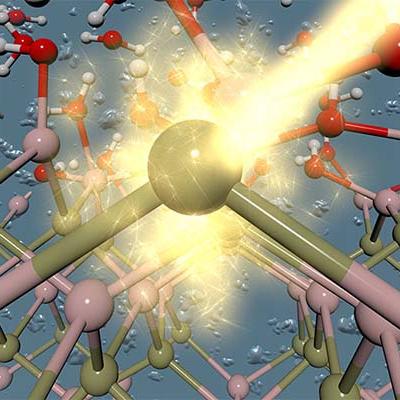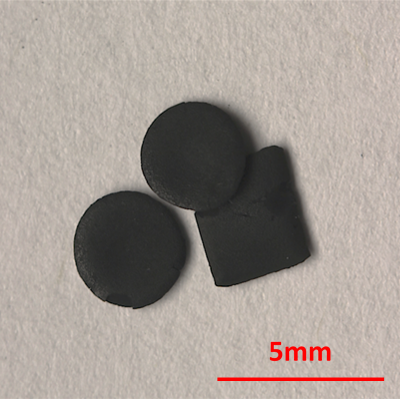LLNL uses the additive manufacturing technique known as Electrophoretic Deposition to shape the source particle material into a finished magnet geometry. The source particle material is dispersed in a liquid so that the particles can move freely. Electric fields in the shape of the finished product then draw the particles to the desired location to form a “green body”, much like an unfired…
Keywords
- Show all (69)
- Synthesis and Processing (17)
- Sensors (15)
- Materials for Energy Products (6)
- Additive Manufacturing (4)
- Ground Penetrating Radar (4)
- Material Design (4)
- Defense Technologies (3)
- 3D Printing (2)
- Membranes (2)
- National Security Forensics (2)
- Rare Earth Elements (REEs) (2)
- Additively Manufactured (AM) Optics (1)
- High Explosives (1)
- Material Characterization (1)
- Spectrometers (1)
- Structural Materials (1)
- (-) Imaging Systems (1)
- (-) Instrumentation (1)
- (-) Magnet Compositions (1)
Image

Dubbed the "LLNL Chemical Prism", the LLNL system has use wherever there is a need to separate components of a fluid. A few examples include:
- Chemical detection for known and previously unknown chemicals or substances
- Separation of biomolecules from a cellular extract
- Fractionation of a complex mixture of hydrocarbons
- Forensic analysis of…
Image

LLNL's high fidelity hydrocode is capable of predicting blast loads and directly coupling those loads to structures to predict a mechanical response. By combining this code and our expertise in modeling blast-structure interaction and damage, along with our access to experimental data and testing facilities, we can contribute to the design of protective equipment that can better mitigate the…

